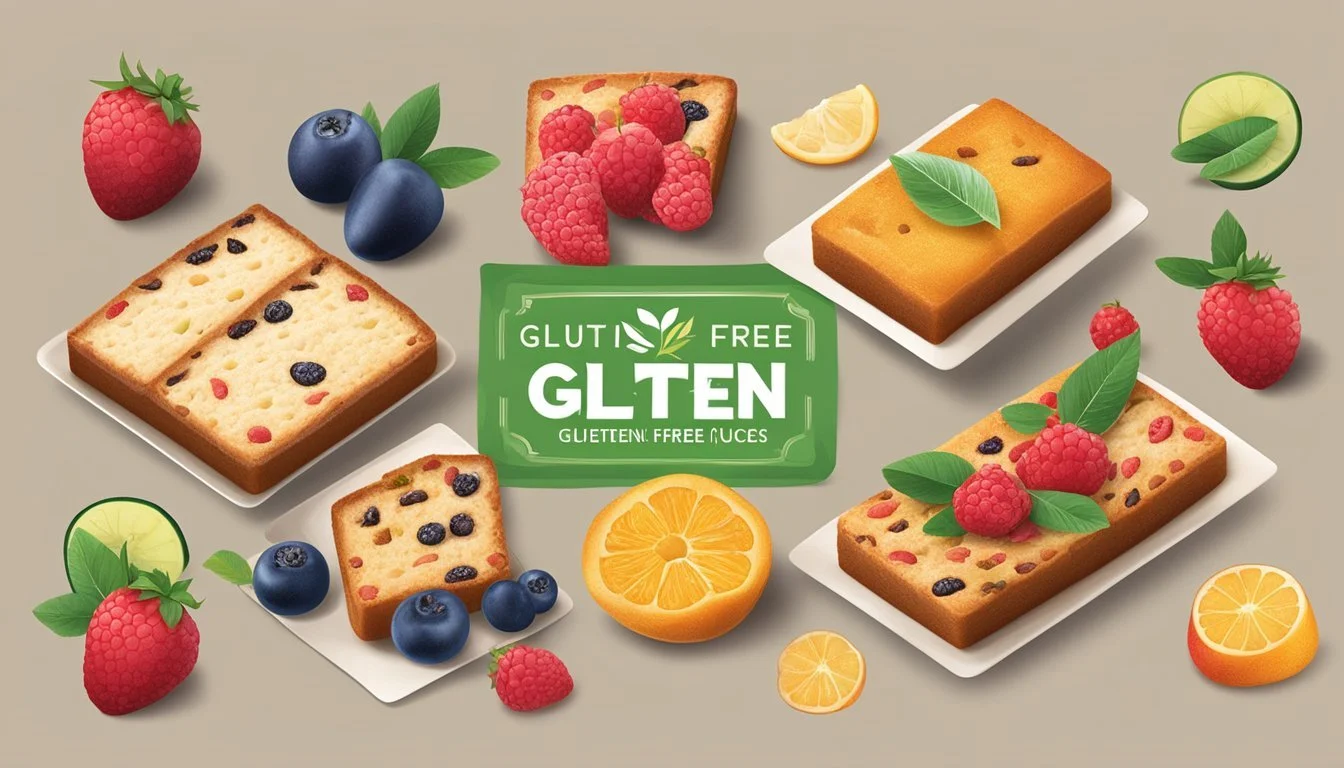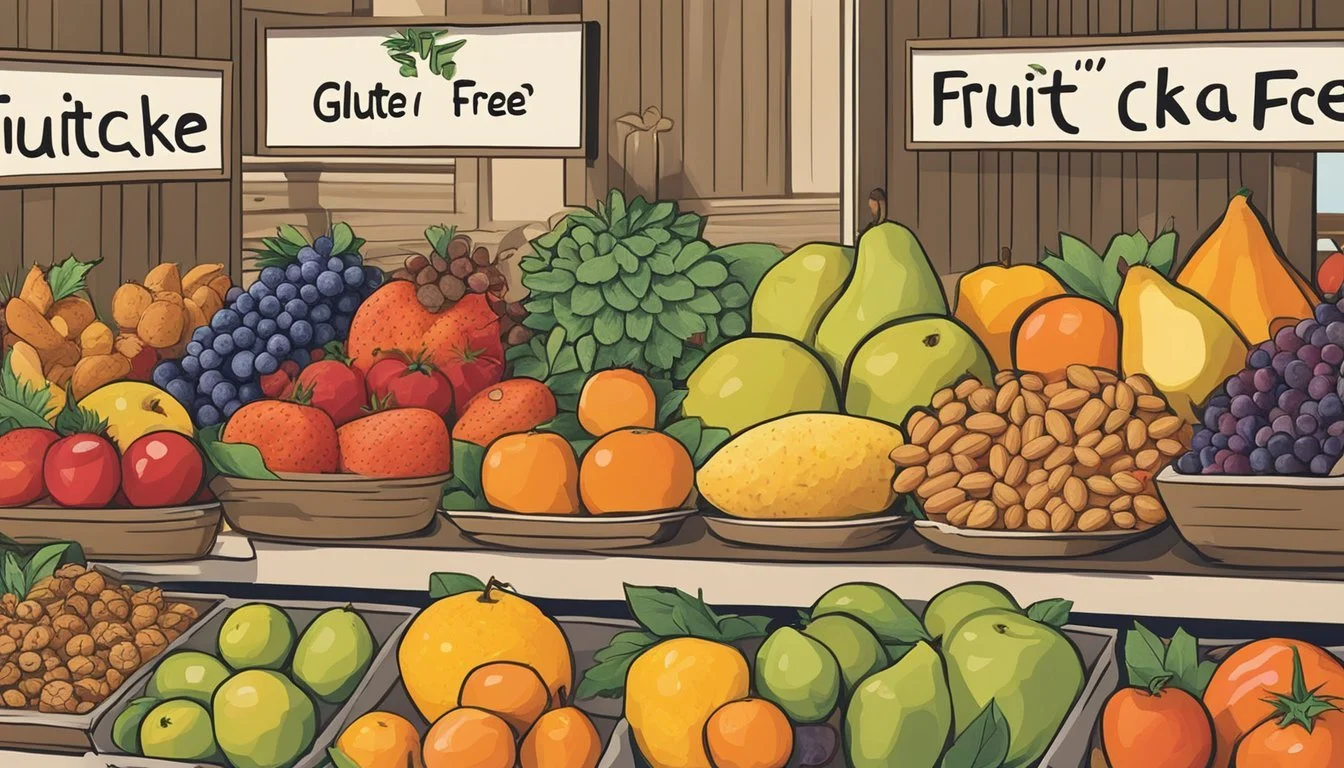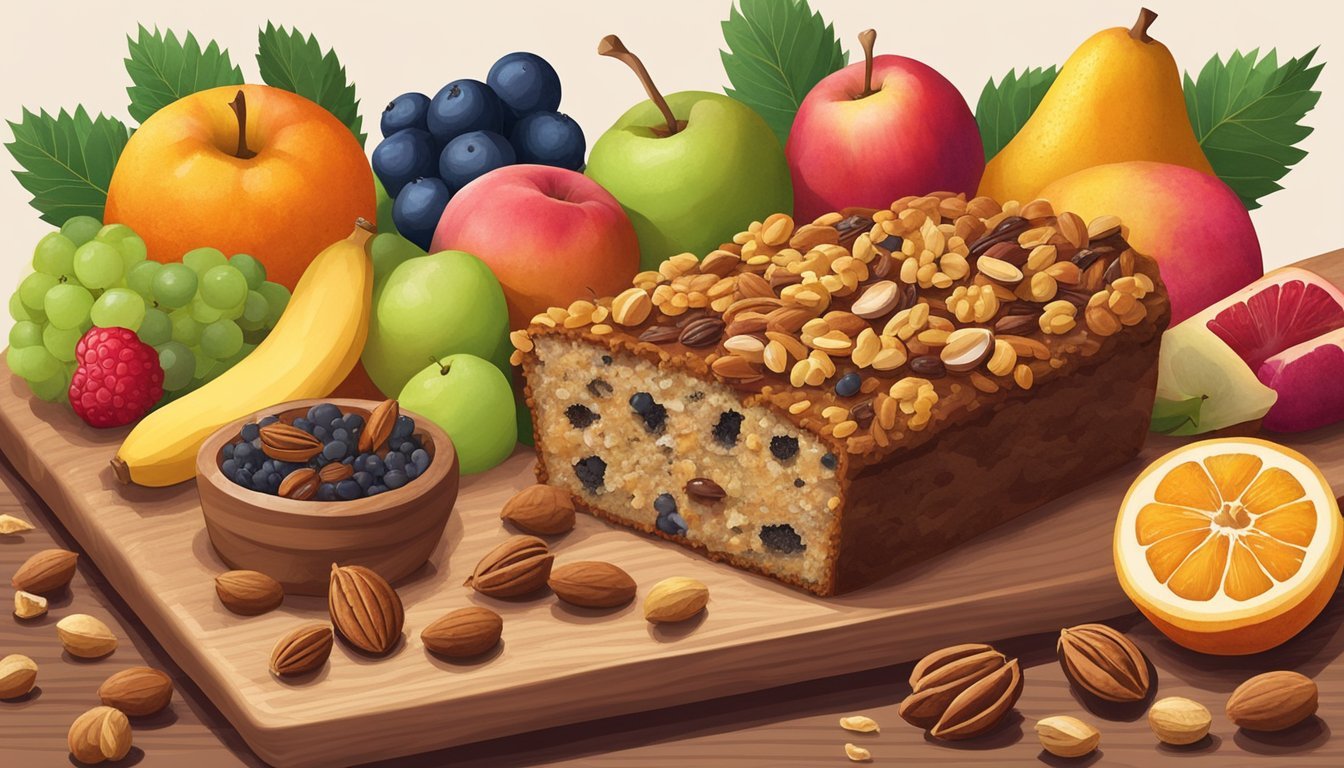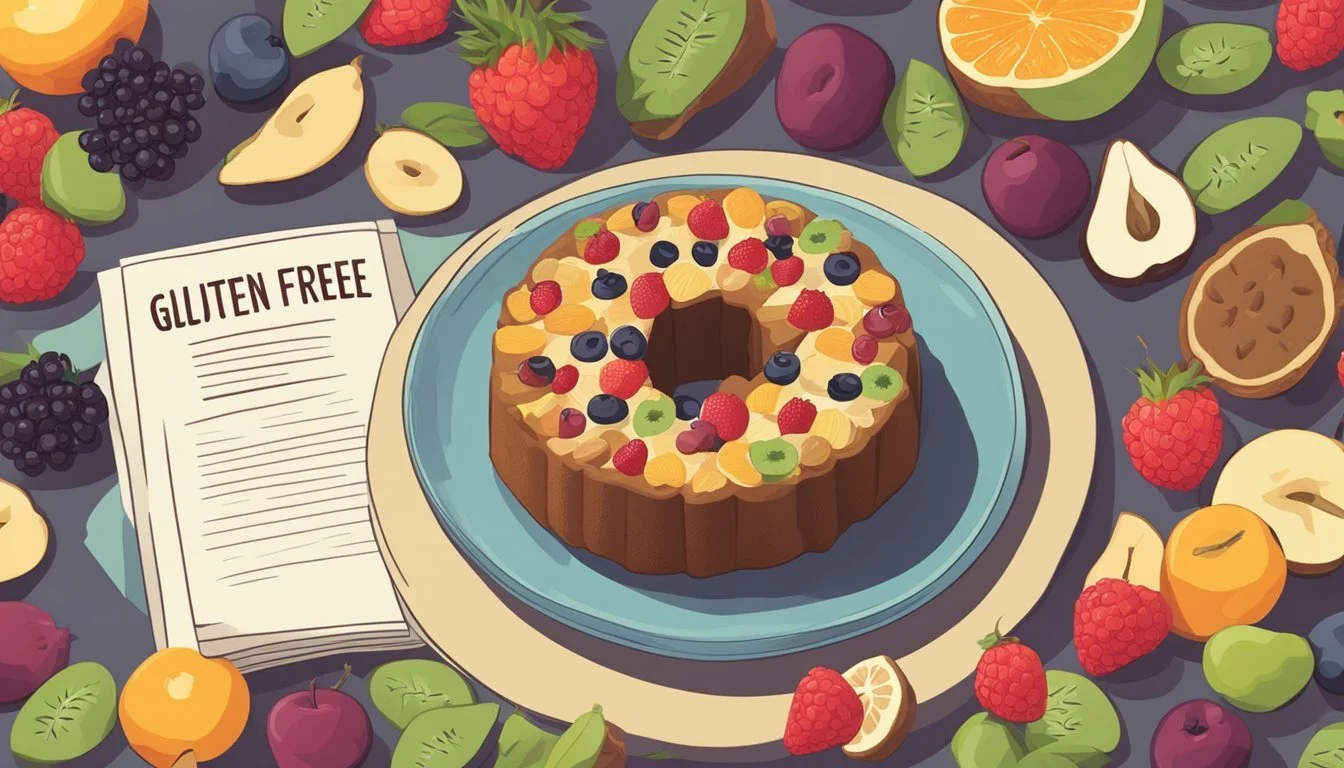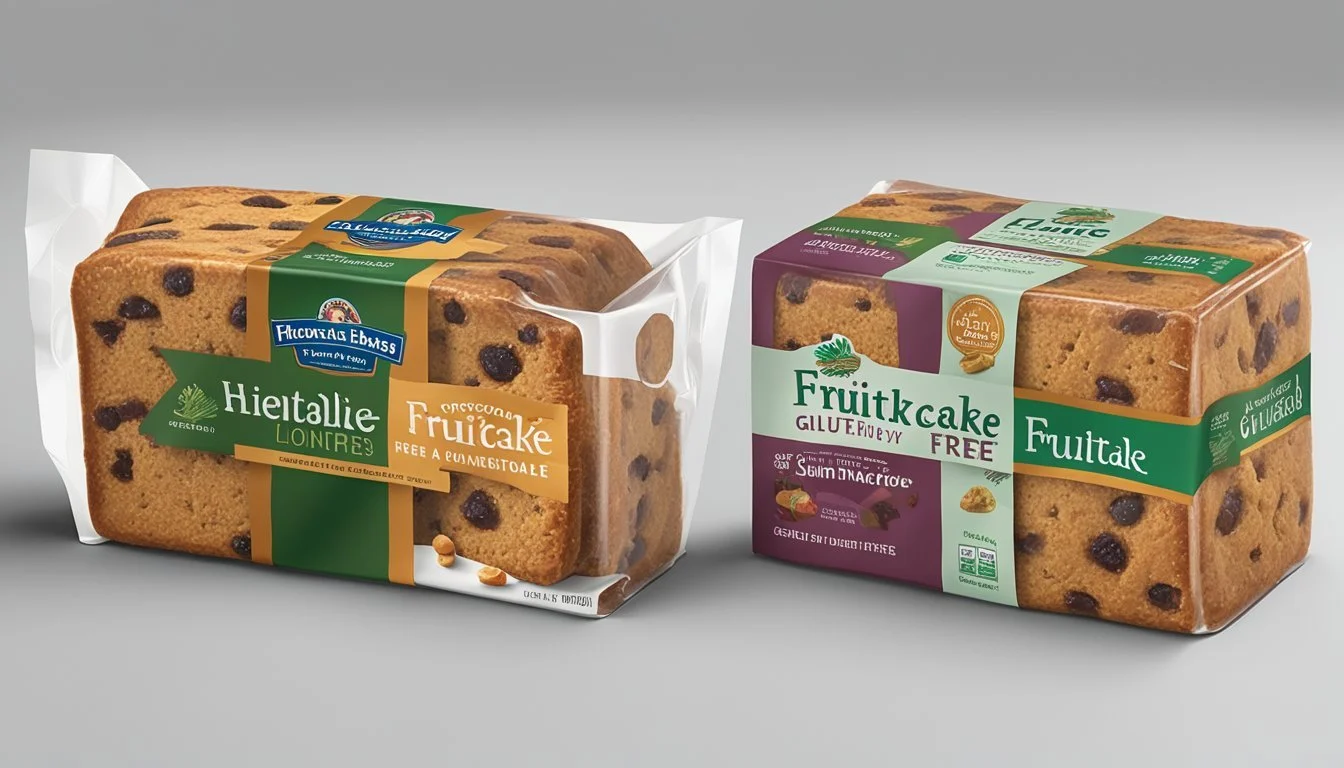Is Fruitcake Gluten-Free?
Understanding Ingredients and Options
Fruitcake, a dense and moist dessert traditionally enjoyed during the holiday season, often contains wheat flour, which is a source of gluten. Gluten is a protein found in wheat, barley, rye, and triticale, making standard fruitcake recipes unsuitable for those with celiac disease or a gluten sensitivity. However, the rise in demand for gluten-free options has led to the creation of gluten-free fruitcake variations, ensuring that those avoiding gluten can still partake in this classic treat.
Gluten-free fruitcake recipes substitute traditional wheat flour with gluten-free alternatives such as rice flour, almond flour, or gluten-free all-purpose blends designed to mimic the properties of wheat flour. These recipes also pay careful attention to the other ingredients, ensuring that they too are gluten-free, including ensuring that any added leavening agents, spices, or flavorings do not contain gluten. Baking gluten-free fruitcake at home allows for greater control over the ingredients, ensuring they meet gluten-free dietary needs.
Commercially-prepared gluten-free fruitcake options are also available, providing a convenient choice without the need to bake from scratch. Specialty bakeries and various baking brands have responded to consumer demand by offering pre-packaged gluten-free fruitcakes that maintain the traditional flavors—like rich fruits (What wine goes well with fruit?), nuts (What wine goes well with nuts?), and spices—while omitting gluten-containing elements. With these advancements, enjoying a slice of fruitcake is now more accessible for those following a gluten-free lifestyle.
Understanding Gluten-Free Baking
In tackling gluten-free baking, one must appreciate the nuances of gluten-free alternatives and recognize the significance they hold for those with dietary restrictions. Mastering the fundamentals can lead to successful and delicious gluten-free baked goods.
Defining Gluten-Free
Gluten-free refers to foods that do not contain gluten, a protein composite found in wheat, barley, rye, and their derivatives. For a product to be considered gluten-free, it must not contain more than 20 parts per million (ppm) of gluten. This is the threshold at which most people with celiac disease can consume food without adverse effects.
Importance of Gluten-Free Options
The availability of gluten-free options is crucial for individuals with celiac disease or gluten sensitivity. Consuming gluten can lead to health complications for these people, making it essential for them to have access to safe, gluten-free alternatives that still cater to their love of baked goods.
Gluten-Free Baking Basics
Gluten-free baking often utilizes a variety of gluten-free flours, such as rice, almond, or coconut flour, to replace traditional wheat flour. However, gluten-free flour lacks the binding properties of gluten, which can affect texture and structure. To counteract this, bakers frequently use xanthan gum as a substitute binder. Here is a basic guideline to consider:
Gluten-Free Flour: Acts as the base for gluten-free baked items. Mixes often include a blend of different gluten-free flours to achieve a balance of taste and texture.
Xanthan Gum: Typically, one would add 1/4 to 1/2 teaspoon per cup of gluten-free flour to mimic gluten's elastic properties.
Gluten-free baking requires precision and often a period of trial and error to perfect recipes, especially given that gluten-free doughs can behave differently than their wheat-based counterparts. It is important to follow recipes closely and measure ingredients accurately for optimal results.
Ingredients of Traditional Fruitcake
Traditional fruitcake is a dense, moist dessert packed with a variety of ingredients that contribute to its rich taste and storied longevity. Each component serves a specific purpose in creating the final product's signature texture and flavor.
Typical Ingredients
Flour: The foundation of the cake's structure.
Sugar: Adds sweetness and helps with browning.
Butter: Provides moisture and contributes to the crumbly texture.
Eggs: Act as a binding agent and help the cake rise.
Baking Powder: A leavening agent that helps the cake to expand.
Dried Fruits (What wine goes well with dried fruits?): Common choices include raisins, cherries, and citrus peel. They bring chewiness and a concentrated fruit flavor.
Nuts: Typically walnuts or almonds; they add crunch and a source of protein.
Spices: Such as cinnamon, nutmeg, and cloves for warmth and complexity.
Alcohol: Often brandy or rum is used to enhance flavor and preserve the cake.
Role of Each Ingredient
Flour: It provides structure through gluten, which gives the cake form and stability.
Sugar: It not only sweetens but also helps to lock in moisture, creating a tender texture.
Butter: A crucial element for richness, butter also lends itself to the overall moistness of the cake.
Eggs: They create emulsions, allowing for a consistent texture and help in leavening.
Baking Powder: Reacts to create bubbles of carbon dioxide, making the cake lighter.
Dried Fruits: They are a source of fiber and sweetness; their chewy texture contrasts with the cake's crumb.
Nuts: Nuts introduce additional texture and are an important source of healthy fats and protein.
Spices: They provide distinct aromatic notes that complement the sweetness and boozy elements of the cake.
Alcohol: Alcohol acts as a preservative, extending the cake's shelf life, and can also tenderize the crumb.
Adapting Fruitcake Recipes for Gluten-Free Needs
When it comes to baking a gluten-free fruitcake, the choice of flour and the use of a binding agent are crucial in achieving a cake that both tastes great and has a desirable texture.
Gluten-Free Flour Alternatives
The success of a gluten-free fruitcake largely hinges on selecting the right blend of gluten-free flours. A single type of flour often does not mimic the properties of wheat flour, hence a blend is recommended. Rice flour, almond flour, and coconut flour are commonly used, either separately or in combination. They provide structure to the cake while ensuring it remains moist and flavorful. Pre-made gluten-free flour blends are also available, which may contain a mix of the following:
White rice flour
Brown rice flour
Almond flour
Coconut flour
Tapioca starch
Potato starch
It is important to note that gluten-free flour blends should have a similar consistency to traditional wheat flour to work effectively in a fruitcake recipe.
Binding Agents
Without gluten, which acts as a natural binder in traditional baking, gluten-free fruitcake can crumble easily. To prevent this, additional binding agents are added to provide the necessary structure. Xanthan gum is one of the most popular choices because it mimics the binding properties of gluten. On average, one quarter to half a teaspoon of xanthan gum per cup of gluten-free flour blend is sufficient. Other binding agents like guar gum or psyllium husk powder can also be used, but quantities might differ and should be adjusted based on the specific recipe.
By carefully choosing gluten-free flour alternatives coupled with the right binding agents like xanthan gum, bakers can create a delectable gluten-free fruitcake that everyone can enjoy.
Taste and Texture Considerations
When crafting a gluten-free fruitcake, preserving the traditional flavors while ensuring a pleasant texture is critical. Bakers must creatively adapt their methods to meet these dual objectives without gluten.
Achieving Traditional Flavors
To replicate the rich, spiced flavor profile of traditional fruitcake, specific ingredients are vital. Orange zest and orange juice are frequently used to infuse the cake with a citrusy tang, complementing the sweetness of the dried fruits. Spices like cinnamon and nutmeg add warmth and depth to the overall taste. These elements help maintain the fruitcake's signature flavor, even in the absence of gluten.
Texture Modifications for Gluten-Free
Gluten-free fruitcakes often have a different texture due to the lack of gluten, which typically adds elasticity and structure. To achieve a moist and dense crumb that resembles conventional fruitcake, various gluten-free flours and binders are utilized. The texture is further enhanced by a high content of fruit and nuts, which provide chewiness and a contrasting crunch. Bakers might introduce xanthan gum or eggs to help bind the ingredients, ensuring the cake remains cohesive even when pre-sliced for convenience.
Alcohol's Role in Fruitcakes
Alcohol, traditionally rum or brandy, serves two main purposes in the making of fruitcakes: it acts as a preserving agent and imparts a distinct flavor.
Preservation and Flavor
Alcohol enhances the longevity of a fruitcake due to its preservative properties, which can extend a fruitcake’s edible life for months, if not years. The alcohol content helps to inhibit bacterial growth and moisture loss that would otherwise lead to spoilage. Aside from preservation, various alcohols such as rum and brandy are chosen for their rich, bold flavors that they impart into the cake, melding with the fruit and spices over time to develop a complex taste profile.
Commonly used alcohols:
Rum: Sweet and with a slight spice, often used to soak fruits.
Brandy: Made from distilled wine, adds a warming note.
Sherry: A fortified wine that provides a nutty flavor.
Non-Alcoholic Alternatives
For those who prefer an alcohol-free fruitcake, various fruit juices can be employed both as preservatives and for flavor. Typically, apple juice or cranberry juice are popular choices due to their acidic nature, which serves a similar function to alcohol in preserving the cake.
Fruit Juice: Used to soak fruits and provide moisture.
Apple Juice: Mild and sweet, pairs well with most fruits.
Cranberry Juice: Adds a tartness that can complement sweeter fruits.
Using non-alcoholic alternatives often requires refrigeration to ensure the fruitcake remains fresh, unlike the traditional alcohol-laden counterpart that can be stored in a cool, dark place.
Holiday and Cultural Significance
Fruitcake holds a special place in holiday traditions, particularly during the Christmas season. Its rich history and worldwide variations mark it as a culturally significant treat.
Christmas Fruitcake Traditions
During Christmas, the fruitcake becomes a nostalgic symbol of festivity and celebration. Many families share the tradition of baking or buying a Christmas cake, with recipes passed down through generations. This dense, moist dessert is typically filled with candied fruit, nuts, and spices, embodying the warmth and spices often associated with the holiday season. A notable custom, predominantly in Western countries, is the "aging" process, where the cake is wrapped and soaked in alcohol, made weeks in advance to deepen its flavors for the Christmas feast.
Global Variations
While the Christmas fruitcake is well-known, several cultures have their own versions, varying the ingredients and methods:
United Kingdom: The classic British Christmas cake, similar to a fruitcake, is rich in dried fruits and nuts and laced with alcohol.
Germany: Known as "Stollen,” this traditional cake is less dense and often coated with powdered sugar.
Italy: The Italians enjoy "Panettone,” a lighter, brioche-like cake with citrus and dried fruit.
Jamaica: Jamaican fruitcake or "black cake" is a hallmark of Christmas, infused heavily with rum and fruits soaked for months in advance.
These global variations illustrate how integral the fruitcake is to the holiday traditions of countries around the world, each adding their unique twist to this festive treat.
Preparation and Baking Techniques
In gluten-free fruitcake preparation, precise measurements and proper heat distribution are key to achieving a moist and flavorful cake. The transformation of raw ingredients into a delectable dessert involves specific mixing methods and careful attention during the baking and cooling process.
Mixing Methods
When creating a gluten-free fruitcake, one starts with mixing dry ingredients like gluten-free flour, baking powder, and spices such as ground allspice, nutmeg, and cinnamon to ensure even distribution throughout the batter. Xanthan gum is often incorporated to replicate the binding properties of gluten. Wet ingredients, typically eggs, molasses, and citrus juice, should be beaten separately to introduce air, which helps in leavening. The dry and wet mixtures are then combined with a folding technique to retain the airiness.
A uniform mixture is essential, so beat the eggs one at a time and scrape down the sides of the bowl frequently. Soaking the dried fruits in juice or brandy can enhance flavor and moisture. Once soaked, fruits and nuts are stirred in, distributing them evenly throughout the batter.
Baking and Cooling
The oven must be preheated to the correct temperature — usually around 350°F (175°C) — for the fruitcake to bake evenly. Portion the batter into pans lined with parchment paper; this prevents sticking and helps to evenly distribute heat.
Baking time varies depending on the size of the pans used. Larger cakes take longer, potentially over an hour, whereas smaller loaves may only require about 40 minutes. A toothpick or cake tester should come out clean when inserted into the center.
Once baked, cooling is just as important as the baking process. The cake should rest in the pan for a time before being transferred to a wire rack to cool completely. This gradual cooling helps the structure of the cake to set, especially important in gluten-free baking where the crumb can be more delicate.
Decorating and Finishing Touches
After baking a gluten-free fruitcake, the final stage is decoration and presentation, which can truly make the cake festive and appealing. Proper ornamentation and presentation styles not only enhance the visual allure but can also complement the flavors.
Ornamentation Ideas
For those opting to add visual flair to their gluten-free fruitcake, candied fruit makes for an attractive and traditional decoration. Creatively placed atop the cake, these colorful pieces add a vibrant contrast to the rich, dense texture underneath. Decorators might consider a drizzle of simple syrup to give the fruit and the cake a glossy appearance. Here is how one might execute such decorations:
Select candied fruit: Choose a variety of colors and shapes for a visually pleasing array.
Arrange artfully on top: Place the candied fruits on the cake in a pattern or scatter them for a more rustic look.
Glaze with simple syrup: Lightly brush the fruits and the surface of the cake with simple syrup to add sheen and sweetness.
Presentation Styles
When presenting a gluten-free fruitcake, the serve ware and setting can significantly impact the overall experience. Consider these presentation styles:
Elegant: Place the cake on a silver platter or glass cake stand for a refined look.
Rustic: A wooden cutting board can give a homey, rustic feel to the presentation.
Festive: Seasonal decorations around the cake, like holly or ribbons, can heighten the festive atmosphere.
The key to a successful presentation is to ensure that the cake looks as enticing as it tastes, and a thoughtful decoration and presentation style can make a gluten-free fruitcake a centerpiece at any gathering.
Storage and Shelf Life
When storing fruitcake, preserving its moisture and flavor is paramount. Properly storing the cake can significantly extend its shelf life while maintaining quality.
Proper Storage Practices
Fruitcake should be stored in an environment that minimizes exposure to air, as this can lead to dryness and spoilage. Wrapping the cake tightly in plastic wrap and then in aluminum foil can protect it from air and other contaminants. For short-term storage, one may place the fruitcake in a pantry or kitchen cabinet. However, for increased longevity, utilizing the refrigerator is advisable.
Short-Term: Pantry or cabinet, wrapped well to retain moisture.
Long-Term: Refrigerator, for increased shelf life.
Extending Edibility
To maximize the shelf life, one might consider refrigeration or freezing. Refrigerated fruitcake can last up to six months, while freezing can extend its edibility beyond a year. An airtight container is essential when storing in the fridge or freezer to prevent moisture loss and to protect the cake from absorbing other odors.
Refrigeration: Up to six months in an airtight container.
Freezing: Can last over a year when stored properly.
Storing fruitcake properly not only enhances its flavor but also ensures it remains a cherished treat for an extended period.
Nutritional Information
When considering the nutritional information of gluten-free fruitcake, it is essential to examine both calorie content and potential health benefits. This assessment is based on standard ingredients commonly found in gluten-free fruitcakes, though individual recipes may vary.
Calorie Content
Gluten-free fruitcake typically derives its calories from fruits, nuts, and sugar. The calorie count for a typical slice (approximately 1/12th of a cake) can range from 200 to 300 calories. Given this range, those monitoring their caloric intake should be mindful of portion sizes.
Calories per slice: 200-300
Main calorie sources: fruits, nuts, sugar
Health Benefits
While fruitcake contains sugar, the health benefits stem from nutrient-rich components like fruits and nuts. A gluten-free fruitcake can offer dietary fiber from nuts and dried fruits (What wine goes well with nuts and dried fruits?), as well as protein from nuts.
Fiber: Aids in digestion and can help to maintain a healthy digestive system.
Protein: Essential for muscle repair and growth, protein is found in higher amounts in nut-enriched fruitcakes.
Sugar: Fruitcakes do contain sugar, so they should be consumed in moderation.
Salt: Generally low in salt, which is beneficial for maintaining a healthier blood pressure level.
These nutritional elements contribute to an overall balanced diet when consumed as part of a varied and moderate eating plan.
Shopping Tips and Tricks
When seeking gluten-free options for fruitcake, it's essential to focus on the selection of quality ingredients and locating reliable gluten-free supplies to ensure the final product is safe and delicious.
Selecting Quality Ingredients
Gluten-Free All-Purpose Flour: A core ingredient for baking gluten-free fruitcake is gluten-free all-purpose flour. Shoppers should look for brands that specify "gluten-free" on the label and check for certification from relevant authorities to ensure the product's integrity. To mimic the properties of regular flour, choose a flour blend that includes xanthan gum, which acts as a gluten substitute by providing elasticity and stickiness in the dough.
Quality Fruits and Nuts: Opt for high-quality dried fruits and nuts. One should consider organic options as they are less likely to contain trace gluten from processing. A kitchen scale can be invaluable when purchasing ingredients in bulk, as it allows for precise measurement, ensuring a perfectly balanced fruitcake.
Finding Gluten-Free Supplies
Locating Products: Many stores now have dedicated gluten-free sections. In these aisles, shoppers can often find gluten-free alternatives to common baking ingredients, such as baking powder, spices, and flavorings, all of which can be critical to the success of a gluten-free fruitcake.
Online Shopping: For greater variety, online stores provide access to a wide array of gluten-free products. Shoppers can read customer reviews to gauge the quality and suitability of the products and take advantage of bulk-buy discounts that may be available.
By adhering to these shopping tips and tricks, anyone can secure the necessary supplies to produce a delightful gluten-free fruitcake.
Homemade vs. Store-Bought
When considering gluten-free fruitcake options, one has the choice between creating a personal homemade creation or selecting a pre-made product from a store. The decision affects not only the taste and texture of the cake but also the ingredient control and potential for customization.
Making Fruitcake at Home
Making a gluten-free fruitcake at home allows for full control over the ingredients, which is critical for those with gluten sensitivities. A homemade fruitcake can be customized according to personal preferences for fruit and nut variety and desired level of sweetness. Here's a basic recipe framework one might follow:
Prepare the fruit mixture: Cook dried fruits, nuts, and seasonings with a liquid such as juice or brandy.
Cool the mixture: Allow it to cool for 30 to 40 minutes.
Mix dry ingredients: Whisk together gluten-free flour, baking powder, and spices.
Combine wet and dry ingredients: Beat in eggs and the cooled fruit mixture, then fold in the flour blend.
Bake the cake: Line a loaf pan with parchment, add the batter, and bake in a preheated oven, typically at 350°F, until done.
Home bakers enjoy the flexibility to tweak recipes to their liking, making the result potentially more tailored and special than store-bought versions.
Purchasing Premade Options
For those who prefer convenience or may not have the time to bake, store-bought gluten-free fruitcakes are a readily available option. These premade fruitcakes provide convenience but may come with limitations such as a higher cost, preservatives, and less control over the ingredient list. The flavor and texture of store-bought cakes can vary widely depending on the brand, so it may take some trial and error to find a preferred product. When shopping, one should read labels carefully to ensure the product is truly gluten-free, as contaminations or mislabeling can occur.
Recipe and Instructions
Creating a gluten-free fruitcake involves a careful selection of alternative flours and attention to maintaining a moist yet structurally sound cake. Follow this step-by-step guide to create a delicious gluten-free version of the classic fruitcake, complete with modifications for additional dietary restrictions.
Step-by-Step Guide
Firstly, one must prepare their dried fruit mixture which often consists of a combination of dried fruits such as raisins, sultanas, cherries, and citrus peel. Typically, to enhance the flavors, the fruit should be soaked in juice or alcohol such as brandy or orange juice.
The batter requires gluten-free flour to replace traditional wheat flour. To each cup of gluten-free flour, add 1 teaspoon of baking powder to ensure the cake rises properly during baking. The ratio of gluten-free flour to other ingredients is crucial to avoid a dense or crumbly texture.
Creaming butter and sugar together until light and fluffy is essential before adding eggs, one at a time. It is important to thoroughly mix after each egg. Following this, the soaked fruit (along with any residual liquid) and nuts are folded into the batter.
Spices, including cinnamon, allspice, and vanilla extract, are added for the traditional fruitcake flavor profile. One must be careful with the quantity to balance the flavors without overwhelming them.
Bake in a preheated oven at 350°F (175°C) after lining a loaf pan with parchment paper. The cake should be checked for doneness by inserting a skewer into the center, ensuring it comes out clean.
Modifications for Dietary Restrictions
For those with additional dietary requirements such as nut allergies, it is possible to omit nuts entirely or substitute with seeds such as pumpkin or sunflower.
To cater to vegan diets, replace butter with a plant-based alternative and use flax or chia seeds soaked in water as an egg substitute. Ensure that the sugar used is vegan-friendly as some sugars are processed with animal bone char.
For individuals avoiding refined sugars, natural sweeteners like maple syrup or agave nectar can be incorporated. The measurement will slightly vary from granulated sugar, so adjustments must be made to maintain the overall consistency of the batter.
Assuring a moist gluten-free fruitcake relies on not over-baking and potentially opting for a lower temperature, around 300°F (150°C), and a longer baking time. This slow baking process thus helps to prevent the fruitcake from becoming too dry or burning.
Frequently Asked Questions
In this section, readers will find concise responses to common inquiries about gluten-free fruitcakes, touching on aspects such as texture, baking technique, and storage.
Common Queries
Is fruitcake naturally gluten-free?
No, traditional fruitcake recipes typically contain wheat flour, which has gluten. However, gluten-free fruitcakes are made using gluten-free flour and other substitutes to mimic the moist texture of their conventional counterparts.
What gluten-free flour can be used in fruitcake?
For a gluten-free fruitcake, one can use gluten-free all-purpose flour. Blends usually contain rice flour, potato starch, and sometimes xanthan gum to provide structure, which is essential for getting the desired texture in gluten-free baking.
Expert Answers
How can someone ensure a moist texture in gluten-free fruitcake?
Achieving a moist texture in gluten-free fruitcake involves using the correct combination of gluten-free flours and moisture-retaining ingredients like xanthan gum. The addition of fruit preserves and liquids such as brandy also contribute to a moist outcome.
What are the storage recommendations for gluten-free fruitcake?
For storage, gluten-free fruitcake should be wrapped tightly in plastic wrap or kept in an airtight container to maintain its moisture. It can be stored in the refrigerator for several weeks; for longer keeping, it can be frozen, well-wrapped, for a few months.
Conclusion
Traditional fruitcake generally contains gluten, typically found in wheat flour used in the recipe. However, it is absolutely possible to enjoy this classic treat even if one adheres to a gluten-free diet. Various gluten-free flour blends and xanthan gum can replace traditional flour, allowing those with gluten sensitivities or celiac disease to partake in this festive dessert.
Manufacturers and home bakers can produce gluten-free fruitcake that maintains the taste and texture of the original by carefully selecting alternative ingredients. Gluten-free fruitcakes offer the same rich, fruity flavor and can be aged with alcohol, following tradition, to enhance the taste.
In summary, fruitcake can be made gluten-free without compromising on its traditional aspects:
Flour: Replace wheat flour with gluten-free flour blends.
Binding Agent: Use xanthan gum for appropriate texture.
Aging Process: Age with alcohol-soaked cheesecloth to maintain moisture and develop flavors.
Gluten-free alternatives are not just imitations but respectful adaptations of time-honored recipes, ensuring everyone can enjoy a slice of fruitcake during celebratory occasions. With growing awareness and availability of gluten-free products, the tradition of savoring fruitcake continues to thrive, inclusive of dietary restrictions.

